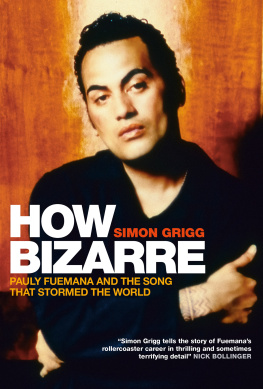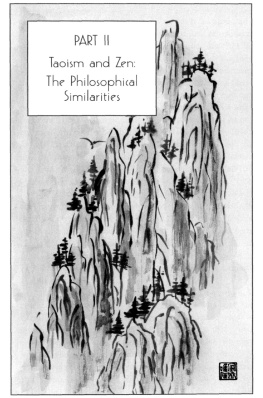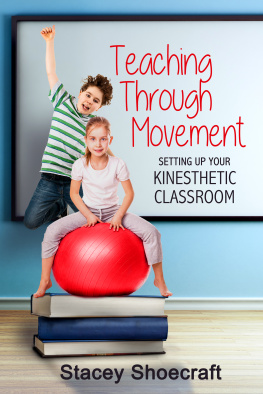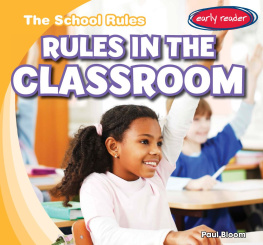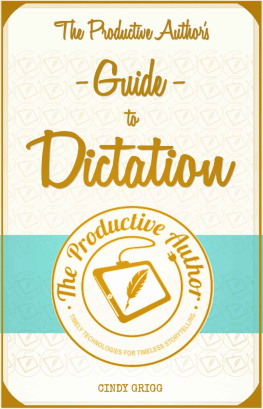Grigg Russell - A-Z of Learning Outside the Classroom
Here you can read online Grigg Russell - A-Z of Learning Outside the Classroom full text of the book (entire story) in english for free. Download pdf and epub, get meaning, cover and reviews about this ebook. year: 2016, publisher: Bloomsbury Publishing Plc, genre: Children. Description of the work, (preface) as well as reviews are available. Best literature library LitArk.com created for fans of good reading and offers a wide selection of genres:
Romance novel
Science fiction
Adventure
Detective
Science
History
Home and family
Prose
Art
Politics
Computer
Non-fiction
Religion
Business
Children
Humor
Choose a favorite category and find really read worthwhile books. Enjoy immersion in the world of imagination, feel the emotions of the characters or learn something new for yourself, make an fascinating discovery.

- Book:A-Z of Learning Outside the Classroom
- Author:
- Publisher:Bloomsbury Publishing Plc
- Genre:
- Year:2016
- Rating:5 / 5
- Favourites:Add to favourites
- Your mark:
- 100
- 1
- 2
- 3
- 4
- 5
A-Z of Learning Outside the Classroom: summary, description and annotation
We offer to read an annotation, description, summary or preface (depends on what the author of the book "A-Z of Learning Outside the Classroom" wrote himself). If you haven't found the necessary information about the book — write in the comments, we will try to find it.
A-Z of Learning Outside the Classroom — read online for free the complete book (whole text) full work
Below is the text of the book, divided by pages. System saving the place of the last page read, allows you to conveniently read the book "A-Z of Learning Outside the Classroom" online for free, without having to search again every time where you left off. Put a bookmark, and you can go to the page where you finished reading at any time.
Font size:
Interval:
Bookmark:


Bloomsbury Education
An imprint of Bloomsbury Publishing Plc
50 Bedford Square London WC1B 3DP UK | 1385 Broadway New York NY 10018 USA |
www.bloomsbury.com
Bloomsbury is a registered trademark of Bloomsbury Publishing Plc
First published 2016
This electronic edition published in 2016
Russell Grigg and Helen Lewis, 2016
All rights reserved.
No part of this publication may be reproduced in any form or by any means graphic, electronic, or mechanical, including photocopying, recording, taping or information storage or retrieval systems without the prior permission in writing from the publishers.
British Library Cataloguing-in-Publication Data
A catalogue record for this book is available from the British Library.
ISBN:
PB 978-1-4729-2120-8
ePub 978-1-4729-2122-2
ePDF 978-1-4729-2121-5
Library of Congress Cataloging-in-Publication Data
A catalog record for this book is available from the Library of Congress.
10 9 8 7 6 5 4 3 2 1
Insides design by Geoff Ward
Printed and bound by Replika Press Pvt. Ltd.
This book is produced using paper that is made from wood grown in managed, sustainable forests. It is natural, renewable and recyclable. The logging and manufacturing processes conform to the environmental regulations of the country of origin.
To view more of our titles please visit www.bloomsbury.com
Contents
We would like to thank the following for their valuable contributions:
Kirsty Lawrence, Myfina Shufflebotham, Charlotte Jukes, Eleri Phelps, Katherine Squire, Abigail Croose, Kate Dow, Gemma McKnight, Rhea Jones, Alison Jenkins, Rhiannon Drew and Sharon Louise Smith. We are also grateful to Joe Carter, editor at Teach Primary, who first saw the value of our ideas. Finally we are indebted to Geoff Ward, Philippa Tomlinson, Helen Diamond, Emily Lunn and the editorial team at Bloomsbury.
To Tom, Mia, Grace and Sofie
Children shut indoors too long either go brain-dead or wild.
(Day, 2007: 181)
W e all have memories of our school days and our childhood. For many parents and teachers, climbing a tree, making daisy chains, rummaging through wasteland, chasing each other down alley ways, fishing in a pond and playing marbles are part of these memories. It was second nature for children to go outside and play this was certainly the case for the authors, one brought up in the cities of Liverpool and Cardiff , the other in the countryside of West Wales and Somerset. Nowadays, however, there are frequent reports that children are not enjoying the simple outdoor pleasures of previous generations. The National Trust, for example, suggests that on average children today spend about an hour a day outside, compared to the three hours of their grandparents generation (Sing, 2014). Of the 7,000 children surveyed, nine in ten had never played conkers, built a raft or used a map or compass. Another survey suggests that children spend the equivalent of one day a week engaged in sofa-bound activities compared to just two-and-a-half hours outside (Adams, 2012). A generation ago it was quite common for children to come home from school, drop off their bags and rush straight outside to play in the street or garden.

Some commentators argue that childrens experiences of learning outside the classroom are on the wane, in a highly commercialised, digital and secular age. They announce that childhood has disappeared (Postman, 1982), become toxic (Palmer, 2007) and play, its defining characteristic, is in rapid decline; so much so that Day (2007) claims schools have to teach children how to play. Concerns about the lack of time children spend outdoors are not limited to the United Kingdom. A report for the Toy Industries of Europe found that childrens leisure time is cut down by too much homework, safety fears, and lack of appreciation for the value of free play (Whitebread, 2012). Similarly in America, there is talk of a play deficit in childhood (Gray, 2013) and the loss of a golden age of free play (Chudacoff, 2007). Meanwhile, in Shanghai, counted as among the top performing educational systems in the world, authorities are moving away from tests that rely too much on memorising facts and figures, with some schools giving children more time to play than study (Phillips, 2013). In Australia there has been a significant decline in childrens outdoor play and routine tasks, such as walking or cycling to school (Planet Ark, 2011). Even in Scandinavia, where there is a long tradition of children spending time engaging with nature, there are signs that childhood experiences are changing. In Norway, a country made up of 40% woodland, researchers report that childrens use of natural areas is becoming more directed and time-controlled by adults rather than self-initiated (Skr and Krogh, 2009).

The decline in outdoor play has been attributed to various causes, including overprotection by parents, loss of play space in the community, neighbours intolerance to ball games and other outdoor play, and the lure of technologies (Campbell, 2011; Curtis, 2013). Within school, class-based lessons in literacy and numeracy have reduced more creative opportunities to explore how these skills can be applied out of class in real contexts. Moreover, many teachers see the health and safety implications associated with taking pupils on educational visits as a major bureaucratic burden (Easton and Brzyska, 2011).
The need for children to reconnect with nature has never been so important. In his seminal book, The Last Child in the Woods, Richard Louv coined the phrase nature deficit disorder to describe the human costs of alienation from nature, among them: diminished use of the senses, attention difficulties, and higher rates of physical and emotional illnesses (Louv, 2005: 36). The eminent psychologist Aric Sigman (2007) estimates that there are more than a million concrete children aged 812 who have never seen the UK countryside.
The aim of this book, however, is to demonstrate how out-of-class learning can make a significant contribution to childrens all-round development, provided practitioners have developed a strong pedagogy that underpins it. In simple terms, this involves understanding the what, why, how, when and where of learning outside the classroom and the ability to explain why you do what you do. Out-of-class learning experiences may take place outdoors or indoors, in outdoor spaces such as beaches or playgrounds or in indoor places such as museums or galleries. There is clear evidence that purposeful, regular learning outside the classroom can make a substantial contribution to addressing many of the major challenges facing primary schools today. These challenges include:
high levels of childrens physical inactivity, unfitness and obesity one in three children are overweight and one in five are obese (Hughes, 2015);
widespread boredom and disengagement in and out of school one poll of 2,000 parents found that children said that they were bored 200 times in six weeks over the summer holiday (Alexander, 2014);
Font size:
Interval:
Bookmark:
Similar books «A-Z of Learning Outside the Classroom»
Look at similar books to A-Z of Learning Outside the Classroom. We have selected literature similar in name and meaning in the hope of providing readers with more options to find new, interesting, not yet read works.
Discussion, reviews of the book A-Z of Learning Outside the Classroom and just readers' own opinions. Leave your comments, write what you think about the work, its meaning or the main characters. Specify what exactly you liked and what you didn't like, and why you think so.

